
Edward John Moreton Drax Plunkett, 18th Baron of Dunsany,, commonly known as Lord Dunsany, was an Anglo-Irish writer and dramatist. He published more than 90 books during his lifetime, and his output consisted of hundreds of short stories, plays, novels, and essays. He gained a name in the 1910s as a great writer in the English-speaking world. Best known today are the 1924 fantasy novel, The King of Elfland's Daughter, and his first book, The Gods of Pegāna, which depicts a fictional pantheon. Many critics feel his early work laid grounds for the fantasy genre.

"The Cats of Ulthar" is a short story written by American fantasy author H. P. Lovecraft in June 1920. In the tale, an unnamed narrator relates the story of how a law forbidding the killing of cats came to be in a town called Ulthar. As the narrative goes, the city is home to an old couple who enjoy capturing and killing the townspeople's cats. When a caravan of wanderers passes through the city, the kitten of an orphan (Menes) traveling with the band disappears. Upon hearing of the couple's violent acts towards cats, Menes invokes a prayer before leaving town that causes the local felines to swarm the cat-killers' house and devour them. Upon witnessing the result, the local politicians pass a law forbidding the killing of cats.
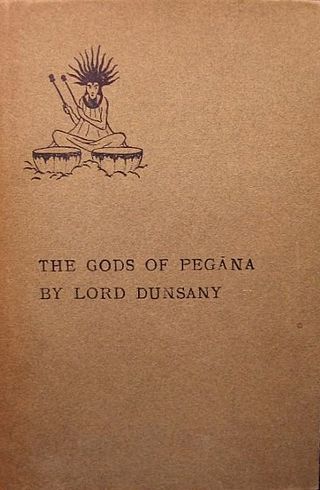
The Gods of Pegāna is the first book by Anglo-Irish writer Lord Dunsany, published in 1905. The fantasy book was reviewed favourably but as an unusual piece. One of the more influential reviews was by Edward Thomas in the London Daily Chronicle.
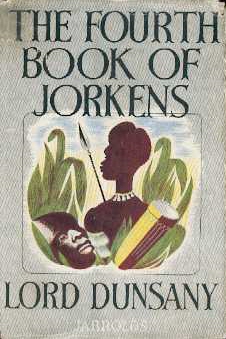
The Fourth Book of Jorkens is a collection of fantasy short stories, narrated by Mr. Joseph Jorkens, by writer Lord Dunsany. It was first published by Jarrolds in 1947. It was the fourth collection of Dunsany's Jorkens tales to be published. It has also been issued in combination with the third book, Jorkens Has a Large Whiskey, and two uncollected short stories, in the omnibus edition The Collected Jorkens, Volume Two, published by Night Shade Books in 2004.

At the Edge of the World is a collection of fantasy short stories by Irish writer Lord Dunsany, edited by Lin Carter. It was first published in paperback by Ballantine Books as the thirteenth volume of its Ballantine Adult Fantasy series in March 1970. It was the series' second Dunsany volume, and the first collection of his shorter fantasies assembled by Carter.

Beyond the Fields We Know is a collection of fantasy short stories by Irish writer Lord Dunsany, and edited by Lin Carter. The title is derived from a description of the location of the border of Elfland used over one hundred times in Lord Dunsany's best-known novel, The King of Elfland's Daughter. It was first published in paperback by Ballantine Books as the forty-seventh volume of its Ballantine Adult Fantasy series in May 1972. It was the series' fourth Dunsany volume, and the second collection of his shorter fantasies assembled by Carter.

The Sword of Welleran and Other Stories is the third book by Anglo-Irish fantasy writer Lord Dunsany, considered a major influence on the work of J. R. R. Tolkien, H. P. Lovecraft, Ursula K. Le Guin, and others. It was first published in hardcover by George Allen & Sons in October 1908, and has been reprinted a number of times since. Issued by the Modern Library in a combined edition with A Dreamer's Tales as A Dreamer's Tales and Other Stories in 1917.

A Dreamer's Tales is the fourth book by Irish fantasy writer Lord Dunsany, considered a major influence on the work of J. R. R. Tolkien, H. P. Lovecraft, Ursula K. Le Guin, and others. Like most of Dunsany's early books, A Dreamer's Tales is a collection of fantasy short stories.

The Book of Wonder is the seventh book and fifth original short story collection of Irish fantasy writer Lord Dunsany, considered a major influence on the work of J. R. R. Tolkien, H. P. Lovecraft, Ursula K. Le Guin, and others. It was first published in hardcover by William Heinemann in November 1912, and has been reprinted a number of times since. A 1918 edition from the Modern Library was actually a combined edition with Time and the Gods.

The Last Book of Wonder, originally published as Tales of Wonder, is the tenth book and sixth original short story collection of Irish fantasy writer Lord Dunsany, considered a major influence on the work of J. R. R. Tolkien, H. P. Lovecraft, Ursula K. Le Guin and others.

Tales of Three Hemispheres is a collection of fantasy short stories by Lord Dunsany. The first edition was published in Boston by John W. Luce & Co. in November 1919; the first British edition was published in London by T. Fisher Unwin in June 1920.
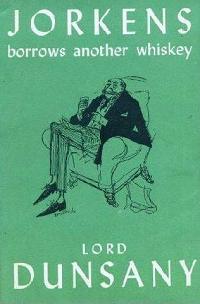
Jorkens Borrows Another Whiskey is a collection of fantasy short stories, narrated by Mr. Joseph Jorkens, by writer Lord Dunsany. It was first published in London by Michael Joseph in 1954. It was the fifth collection of Dunsany's Jorkens tales to be published. It has also been issued in combination with the sixth book, The Last Book of Jorkens, and three other short stories, in the omnibus edition The Collected Jorkens, Volume Three, published by Night Shade Books in 2005.

The Travel Tales of Mr. Joseph Jorkens is a collection of fantasy short stories by writer Lord Dunsany. It was first published in London by G. P. Putnam's Sons in April, 1931, with the American edition following in September of the same year from the same publisher. It was the first collection of Dunsany's Jorkens tales to be published. It has also been issued in combination with the second book, Jorkens Remembers Africa, in the omnibus edition The Collected Jorkens, Volume One, published by Night Shade Books in 2004.
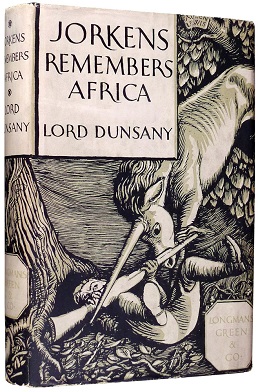
Jorkens Remembers Africa is a collection of fantasy short stories, narrated by Mr. Joseph Jorkens, by writer Lord Dunsany. It was first published in New York City by Longmans, Green & Co. in October, 1934, with the English edition following in November of the same year from the same publisher. It was the second collection of Dunsany's Jorkens tales to be published. It has also been issued in combination with the first book, The Travel Tales of Mr. Joseph Jorkens, in the omnibus edition The Collected Jorkens, Volume One, published by Night Shade Books in 2004.
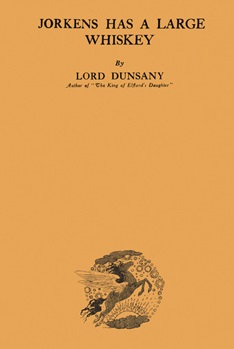
Jorkens Has a Large Whiskey is a collection of fantasy short stories, narrated by Mr. Joseph Jorkens, by writer Lord Dunsany. It was first published in London by Putnam in September, 1940. It was the third collection of Dunsany's Jorkens tales to be published. It has also been issued in combination with the fourth book, The Fourth Book of Jorkens, and two uncollected short stories, in the omnibus edition The Collected Jorkens, Volume Two, published by Night Shade Books in 2004.

The Little Tales of Smethers and Other Stories is a collection of fantasy and crime short stories by writer Lord Dunsany. It was first published in London by Jarrolds in October, 1952.
Joseph Jorkens is the lead character in over 150 short stories written between 1925 and 1957 by the Irish author Lord Dunsany, noted for his fantasy short stories, fantastic plays, novels and other writings. The Jorkens stories, primarily fantasy but also including elements of adventure, mystery and science fiction literature, have been collected in a series of six books, and were a key inspiration for the "fantastic club tale" type of short story.

In the Land of Time and Other Fantasy Tales is a posthumous collection of short stories by the writer Lord Dunsany in the Penguin Classics series. It was published in 2004. Edited and with an introduction by S. T. Joshi, it assembles material from across Dunsany's long career. The cover illustration is a colourised version of a classic illustration for an early Dunsany story by his preferred artist, Sidney Sime.

















